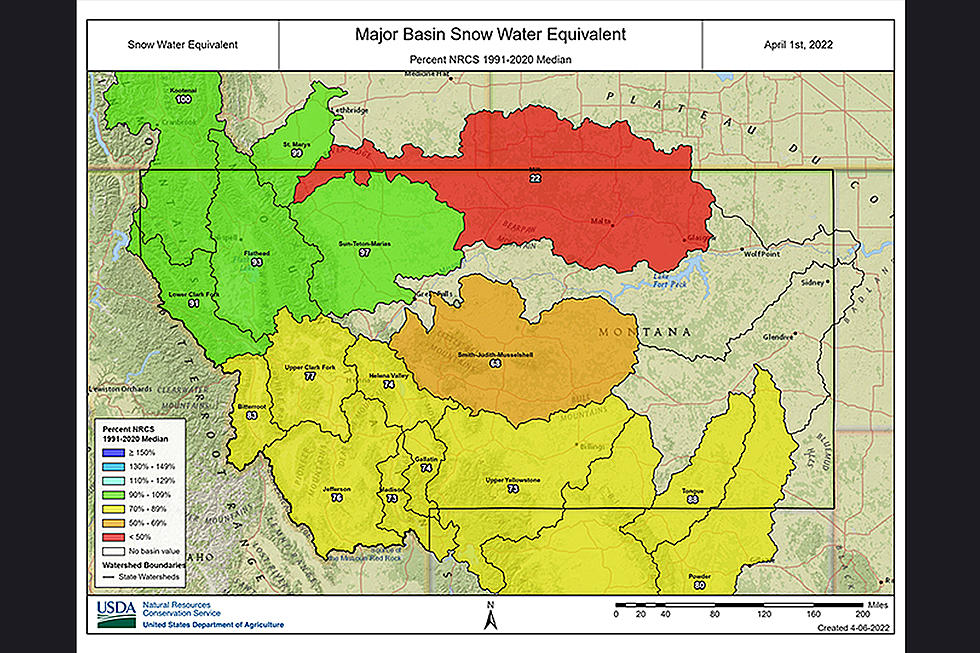
Snow Levels Concern Montana Streamflow Experts
First, the good news:
The snowpack levels in the northern Rockies of Montana are at 103 percent of normal in the Sun-Teton-Marias, near Glacier National Park.
However, that's the only place above normal for snowpack levels at the beginning of April in the state. In fact, directly east of the Sun-Teton-Marias region, the Milk River snow levels are at the opposite end of the scale - only 12 percent.
Western Montana is faring better than eastern Montana, but Hydrologist Eric Larson of USDA Natural Resources Conservation Service (NCRS) said that the best snowfall was in December. And since then, it's been three months of below normal precipitation. The outlook for spring and summer runoff in parts of Montana are "not optomistic," according to the NCRS April report.

Larson said in the news release, "Thankfully December brought abundant precipitation, because it basically built most of this season's snowpack."
Unfortunately, temperatures were higher in March, bringing rain instead of snow. And the NOAA Climate Prediction Center is not predicting cool, wet weather for the next few months, either.
Snowpack levels at the beginning of April
In Western Montana, up north in the Flathead drainage, there's a good 99 percent snowpack. The Lower Clark fork is 95 percent of normal and the Upper Clark Fork is 83 percent of normal.
The Bitterroot River drainage has 88 percent, and the individual snowcourses report:
A few other Montana snowcourses:
NCRS is looking ahead at streamflow, and the Jefferson River in eastern Montana is predicted at only 50% of normal flow. Streams on the east side of the Beartooth Mountains will be at about 80 percent of streamflow. Again, if the next few weeks bring cool, wet weather, it will help. Besides any more possible snowstorms, officials are now watching the rate at which the snow is melting in the next few weeks. The higher mountain snows have not melted significantly...yet.

